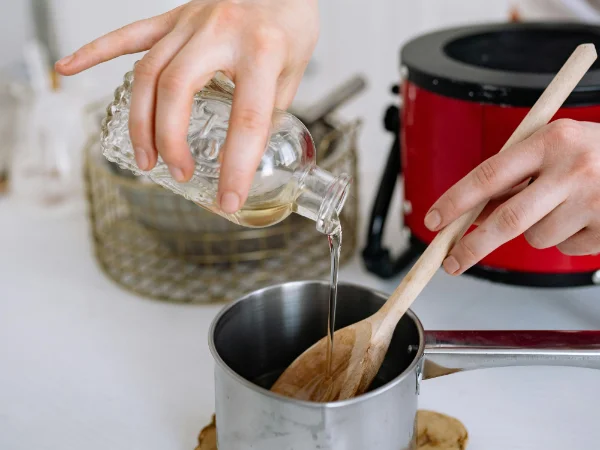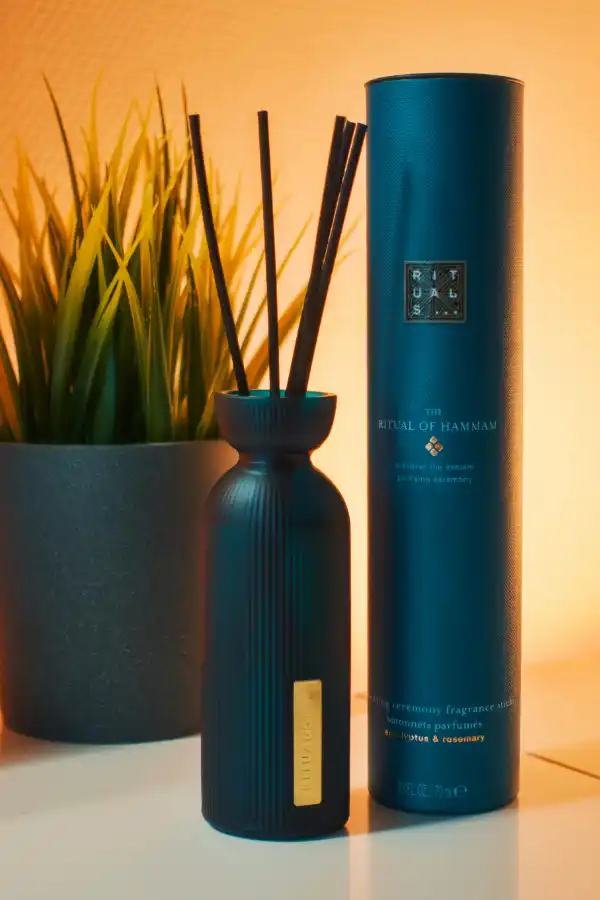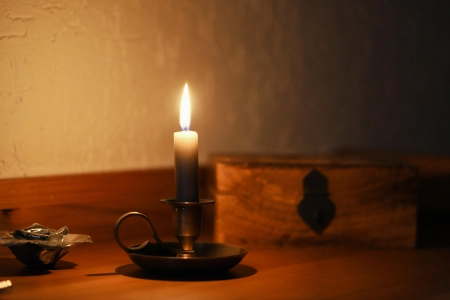For centuries, scented candles have been more than just a source of gentle illumination—they have been an expression of art, ritual, and innovation. From ancient ceremonies to modern-day home décor, the captivating aroma and glowing ambiance of these candles continue to weave together tradition with cutting-edge advancements. In this article, we explore the rich history of scented candles, their cultural and technological evolution, and how the enduring techniques of the past continue to inspire today’s artisanal and entrepreneurial endeavours.
Ancient Beginnings: Rituals and Early Craftsmanship
The story of scented candles dates back to antiquity. Early civilizations discovered that combining natural waxes or animal fats with aromatic botanicals could produce burning light imbued with fragrance. The Egyptians, renowned for their sophisticated approach to ritual and beauty, were among the first to experiment with such practices. They combined tallow with essential oils to craft candles used not only to illuminate their temples but also to consecrate space during sacred ceremonies. These early innovations laid the foundation for what would become a timeless art form.
Similarly, the Greeks and Romans embraced candle-making, refining the process by using beeswax—a substance that produced a cleaner and longer-lasting flame. Roman feasts and public events often featured beeswax candles enhanced with naturally derived scents from herbs and flowers. This marriage of function and luxury underscored the societal importance of candlelight in higher echelons of culture and governance. In Asia, ancient Chinese and Japanese practitioners created candles infused with sandalwood, jasmine, and other local aromatics, employing these fragrant fires in meditation and ceremonial contexts. Such early endeavours illustrate how scent and light were inseparable companions in the quest for spiritual and physical well-being.
The Cultural Renaissance of Candle-Making
As centuries passed, the art of crafting candles underwent periods of significant transformation. During the Middle Ages, while the essential use of candlelight for illumination and religious observance remained robust, the emphasis on aroma began to evolve. In European households, particularly among the aristocracy, the use of candles was interwoven with social etiquette and luxury. By the time of the Renaissance, candle-making had experienced a revival where the refinement of techniques dramatically elevated both the aesthetic and functional aspects of candles.
Craftsmen honed their methods, experimenting with diverse blends of waxes and essential oils. The aesthetics of a candle, from its shape and burn quality to its fragrant allure, became a symbol of sophisticated taste and opulence. Attending grand banquets or intimate gatherings lit by these artful creations allowed patrons to experience an environment carefully curated to evoke elegance and tranquillity. Although the candles of this era were not “scented” in the modern marketing sense, they undeniably carried the seeds of today’s innovation by merging practicality with an unmistakable air of luxury.
The Industrial Revolution: Mass Production and Enhanced Artistry
The advent of the Industrial Revolution brought revolutionary changes to candle production. The discovery and popularization of paraffin wax in the 19th century transformed candle-making from an exclusively artisanal craft into a scalable, mass-produced commodity. Suddenly, affordable candles became available to the broader public, democratizing the enjoyment of scented illumination. Manufacturers began to experiment not only with durable and cost-effective materials but also with new scent formulations that could be marketed to diverse audiences.
During this period of rapid change, scented candles started to cater to a broader range of needs—from masking unfavourable odours in increasingly urban environments to enhancing domestic comfort through relaxing fragrances. The industrial approach to candle production did not entirely erase the artistry of candle-making; rather, it spurred further innovation. Traditional techniques merged with automated processes, allowing for precise control over burn time, fragrance intensity, and design. This blend of age-old traditions and modern science set the stage for the contemporary candle market, where quality, sustainability, and creativity are paramount.
Scented Candle History and their Ingredients
Ancient artisans crafted early scented candles from natural materials that varied by region and availability. Some common ingredients included:
Tallow – Rendered animal fat, primarily from cows and sheep, was widely used, though it had a strong odour.
Beeswax – Used by the Romans and Egyptians, beeswax burned cleanly and had a naturally pleasant scent.
Cinnamon Wax – In India, wax was made by boiling the fruit of the cinnamon tree, creating naturally fragrant candles.
Bayberry Wax – In colonial America, boiling bayberries produced a clean-burning, sweet-smelling wax.
Plant-Based Waxes – The Japanese used tree nuts for wax, while the Chinese extracted wax from insects and seeds.
Whale Fat – In China, candle makers sometimes used whale fat to craft candles that burned slowly.
These early candles served practical purposes, providing light, playing a role in religious ceremonies, and occasionally offering aromatic benefits.
Modern Innovations: Craftsmanship in a New Era
Today, scented candles are experiencing a renaissance of sorts, driven by consumer demand for products that not only perform well but also offer unique sensory experiences. Artisanal candle-makers are reviving centuries-old methods while integrating inventive techniques inspired by modern technology. Many producers now focus on using eco-friendly materials, such as soy or coconut wax, as they enhance both the burn quality and the environmental sustainability of their offerings.
Modern candle-crafters experiment with a vast array of essential oils, blends, and natural additives to create compositions that evoke everything from nostalgic memories to futuristic escapism. This convergence of nature and technology has spurred an industry where innovation meets tradition. The meticulous process of hand-pouring and scent blending is complemented by laboratory-grade quality control, ensuring that each candle delivers an unparalleled aromatic experience. With consumer preferences shifting towards both bespoke and sustainable products, the industry has never been more vibrant.
The Science Behind the Scent
Beyond aesthetics and artistry, scented candles have a profound impact on our emotional and psychological well-being. When ignited, these aromatic wonders release fragrance molecules that interact directly with our olfactory receptors. This interaction sends signals to the limbic system—the part of the brain responsible for emotion and memory—and often triggers the release of mood-boosting neurotransmitters such as serotonin and dopamine. Whether it is the calming effect of lavender or the invigorating burst of citrus, specific scents can significantly influence mood, helping to alleviate stress or promote mental clarity.
Analytical studies have even linked the sensory stimulation provided by scented candles to improved relaxation, reduced anxiety, and enhanced overall mental well-being. This convergence of science and art underscores the significant role these candles play both as objects of beauty and as functional tools for promoting a balanced lifestyle.
From Passion to Profit: Launching Your Candle-Making Venture
The rich history of scented candles not only inspires artists and designers—it also offers exceptional opportunities for entrepreneurs. For those with a passion for home fragrance and a flair for creativity, turning this passion into a lucrative business can be both fulfilling and profitable. Fortunately, a wealth of resources is now available to guide you through every step of the journey.
If you’re considering setting up your own enterprise, start by visiting our comprehensive Candle Making Business page. Here, you’ll find expert insights into all aspects of the industry, from production techniques and safety standards to market trends and consumer behaviour. This central resource serves as a launching pad for aspiring entrepreneurs looking to carve out a niche in the competitive world of scented candles.
One of the most critical components of a successful enterprise is strategic planning. Our detailed Candle Making Business Plan provides a step-by-step guide on mapping out your venture. This resource outlines everything from initial market research and budget allocation to production processes and sales strategies. By following this structured blueprint, you can confidently navigate the complexities of starting a business, ensuring every decision is data-driven and future-focused.
Operational efficiency is another cornerstone of a thriving candle-making venture. To streamline your workflow and reduce overheads, consider utilizing our professionally designed Candle Making Business Templates. These customizable templates cover essential areas such as inventory management, order tracking, and financial forecasting. With these tools at your fingertips, you can focus more on innovation and creativity while maintaining seamless operations.
Marketing is equally crucial in transforming a budding enterprise into a market leader. With countless brands vying for consumer attention, distinct and effective promotional strategies are indispensable. Our dedicated Candle Making Business Marketing section offers actionable insights, from building a compelling brand story to optimizing your social media presence. These marketing strategies have been developed specifically for the dynamic world of home fragrance, ensuring that you reach your target audience with clarity and impact.
A Glimpse into the Future: Trends and Sustainable Initiatives
As we’ve learned, the history of scented candles is incredibly varied. But as we look ahead, the evolution of scented candles appears set to continue down a fascinating path. Modern consumers are increasingly drawn to products that not only enhance their environments with inviting aromas but also reflect sustainability and ethical production practices. In response, candle-makers are experimenting with biodegradable ingredients and packaging, eco-friendly waxes, and sustainably sourced essential oils.
Innovative technologies are also reshaping the industry. Smart candles—integrated with cutting-edge sensors and controlled via smartphone applications—provide personalized ambiance and safety features that cater to modern lifestyles. These advancements demonstrate how the fusion of art, science, and technology can drive a classic craft into the future.
Moreover, a renewed interest in self-care and mindfulness has spurred a market and helping to define the evolution of fragrant candles. Candles are not just decorative accents but pivotal elements in personal wellness routines. Aromatherapy, meditation, and even sleep enhancement practices are all benefiting from the calming qualities of well-crafted candles. The sensory experience provided by these products resonates with consumers on a deeply personal level, emphasizing the timeless appeal of combining functional design with evocative fragrance.
Celebrating the Cultural Impact of Scented Candles
Throughout history, scented candles have held a mirror to the cultural and social mores of their time. In ancient societies, the fragrance of a burning candle was believed to purify and protect, while in Renaissance courts, candlelight represented both opulence and refinement. Today, as our society shifts towards a more holistic and environmentally conscious mindset, these same candles transform spaces into havens of relaxation and creativity. They serve as gentle reminders of our shared heritage—a confluence of art, science, and the endless quest for beauty.
The sustained popularity of scented candles is, in part, a tribute to their ability to adapt. The ancient methods of combining natural ingredients have been fine-tuned over the centuries, merging with modern innovations to deliver both practicality and aesthetic pleasure. In contemporary settings, these candles continue to be cherished for their capacity to evoke nostalgia and create a warm, inviting atmosphere in every home.
Bridging History and Modern Entrepreneurship
For those who admire the artistry and history of scented candles, it’s often coupled with the awareness of seeing an opportunity in its modern evolution, the journey into entrepreneurship is both exciting and accessible. Whether you’re inspired by the ancient rituals of Egypt or the industrial ingenuity of the 19th century, the legacy of scented candles offers a rich tapestry from which to draw inspiration.
Embracing this heritage, forward-thinking entrepreneurs are reinventing the candle-making process to reflect current trends and consumer values. From eco-friendly production to digitally integrated marketing, today’s business owners are melding tradition with cutting-edge strategy. For instance, many successful brands draw on centuries-old techniques to produce candles that are both authentic and innovative, thereby appealing to customers seeking quality, sustainability, and a personal connection to the product.
If you’re ready to embark on this journey, consider this article a call to action. Explore the insightful resources we’ve curated on our Candle Making Business page to learn more about the multifaceted world of scented candles. By tapping into these industry-specific tools, you’re not only honouring a deep-rooted tradition—you’re also positioning yourself at the forefront of a thriving market.
In addition to a solid business plan, leveraging customized tools such as a Candle Making Business Plan is essential for distilling your vision into a pragmatic roadmap. Comprehensive planning ensures that every aspect of your venture, from sourcing raw materials to crafting the perfect scent blend, is meticulously managed. Integrating these planning resources can help streamline operations and maximize both creativity and profitability.
Supporting your business foundation further, our Candle Making Business Templates allow you to effortlessly manage the administrative and operational details. These documents are designed to help you standardize processes, monitor growth, and adapt quickly to market changes. With this framework in place, you can concentrate on crafting innovative products that truly resonate with your target audience.
Finally, harnessing the power of modern digital marketing is crucial. Our specialized Candle Making Business Marketing resources provide you with the techniques and strategies needed to build an authentic brand identity and outreach plan. Whether you’re leveraging social media, search engine optimization, or influencer collaborations, effective marketing can bridge the gap between your creative vision and your customers’ desires.
Embracing the Legacy While Innovating for Tomorrow
The history of scented candles is an inspiring saga of transformation, one that illustrates how human ingenuity can take simple elements—wax, flame, and fragrance—and transform them into expressions of cultural identity, artistic craftsmanship, and functional beauty. From the sacred fires of ancient temples to the warm glow in modern living rooms, candles have continuously evolved to reflect the values and aspirations of their time.
Today’s candle industry is a testament to the enduring power of tradition blended with innovation. The very techniques honed by our ancestors continue to influence modern manufacturing processes, ensuring that every candle we light is part of a larger narrative. This narrative is not static; it is an ever-evolving story that invites contemporary artisans and entrepreneurs to contribute their own chapters.
As the market grows increasingly competitive, those who embrace both heritage and modern best practices will lead the way. Whether you are a seasoned craftsman or a budding entrepreneur, the legacy of scented candles offers endless inspiration. By integrating time-tested methods with innovative business strategies, you can create products that not only look and smell exquisite but also tell a story—your story.
Conclusion: The History of Scented Candles and Lighting the Way Forward
The evolution of scented candles is a journey marked by artistry, ritual, and pioneering spirit. With roots that reach deep into human history, these luminous treasures have evolved from rudimentary ceremonial objects to modern-day staples of home décor and personal wellness. Their luminous glow continues to inspire and influence new generations of makers—both in the refined craft of candle making and in the entrepreneurial ventures that bring these artisanal products to market.
For those inspired by this heritage and eager to explore the business opportunities it presents, the resources available today can light your path towards success. Whether you are refining your craft with classic techniques or leveraging state-of-the-art strategies to launch your enterprise, there has never been a more exciting time to enter the field. Delve into the wealth of information on our Candle Making Business page, chart your course with a dedicated Candle Making Business Plan, streamline your operations using our Candle Making Business Templates, and promote your brand brilliantly with targeted advice from our Candle Making Business Marketing section.
As we continue to celebrate the past and innovate for the future, scented candles remain a symbol of our collective creativity and resilience. Their journey reminds us that every flicker of flame carries the potential to ignite a spark of inspiration—a spark that could transform a humble business into a vibrant enterprise. Embrace the legacy, honour the tradition, and let your passion for candle-making illuminate the path forward.



